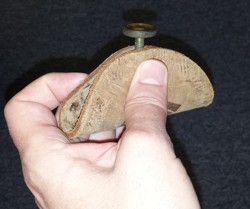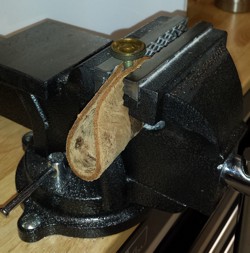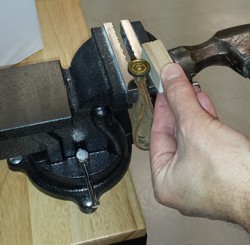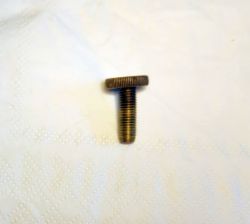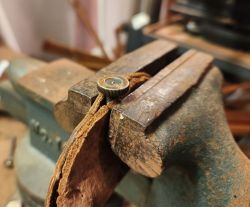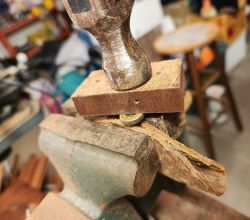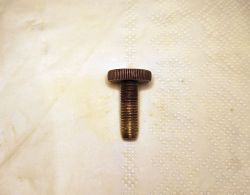Straightening Bent Brass Screws
Many times you will find a telegraph instrument that has been dropped in the past, the result of which is often that one of the knurled thumbscrews gets bent. Repairing these is easy, but the procedure to be used depends on how badly the screw head is bent.
Mildly Bent Screws
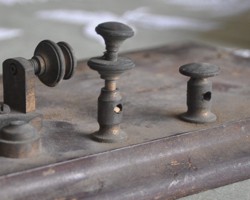 |
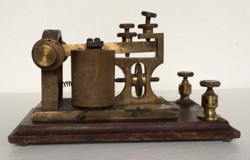 |
|---|
Above are 2 examples of knurled head screws I consider to be "mildly" bent. (The one on the right is about the upper limit of "mild" in my opinion). For screws like this, they can be straightened using a hammer and vise. There are 2 methods I use, depending on where the screw is bent.
1. If the screw shaft itself is bent below the head of the screw, then use the following procedure:
First, take one of your leather drink coasters and fold it over on the screw threads, with the top edge of the leather aligned approximately with the point the bend starts. (Remember, we use these leather drink coasters to prevent damage to the screw threads and knurls). Then clamp this tightly into the vise with the top edge of the leather (and the start of the bend) lined up with top edge of the vise.
Now get a small block of wood and hold it against the knurled screw head on the side that is bending towards the block. The wood block will prevent the knurls from getting damaged. Hit the wood block lightly with the hammer then start increasing the force of the blows slowly until you notice a change in the position of the screw head. Now give a few more blows with this same force until the screw head is in the upright position.
The pictures below illustrate the proper use of the leather and wood block to avoid damage to the screw knurls and threads while straightening the part. (The screw used in the example is not actually bent. I'm just using it to demonstrate the set-up procedure):
2. If the screw shaft itself is fairly straight but the head of the screw is bent, we will use a procedure similar to 1. but instead of hitting sideways on the screw head, we will hit straight down on the screw head:
Severely Bent Screws
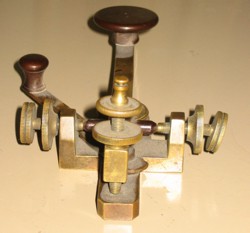 |
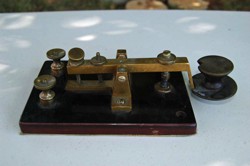 |
|---|
Above are 2 examples of screws that I consider to be "severely" bent. If you click on the picture on the left, you will notice the head is bent so badly that the screw is starting to crack. The one of the right is bent towards the camera so it is hard to see just how badly it is bent, but I repaired this key, so believe me it was pretty bad.
For screws like this, we need to use a small propane torch, available from most hardware stores. First, get a block of wood and drill a hole in the wood, with the diameter a bit larger than the screw and about 1/2" deep. Stand the screw in the hole. This will be your fixture for performing the repair.
Now turn on the torch, adjust to the proper setting, then point the torch at the bend in the screw. Don't focus the heat on the screw head. When the screw threads start to glow orange, take your long-nose pliers, grab the knurled head and gently bend it so the screw is upright. Turn off the torch and allow the screw to cool. Sometimes the brass might become discolored from the heating. If you don't like this, you can re-polish it and then even re-patinate it if you desire.

